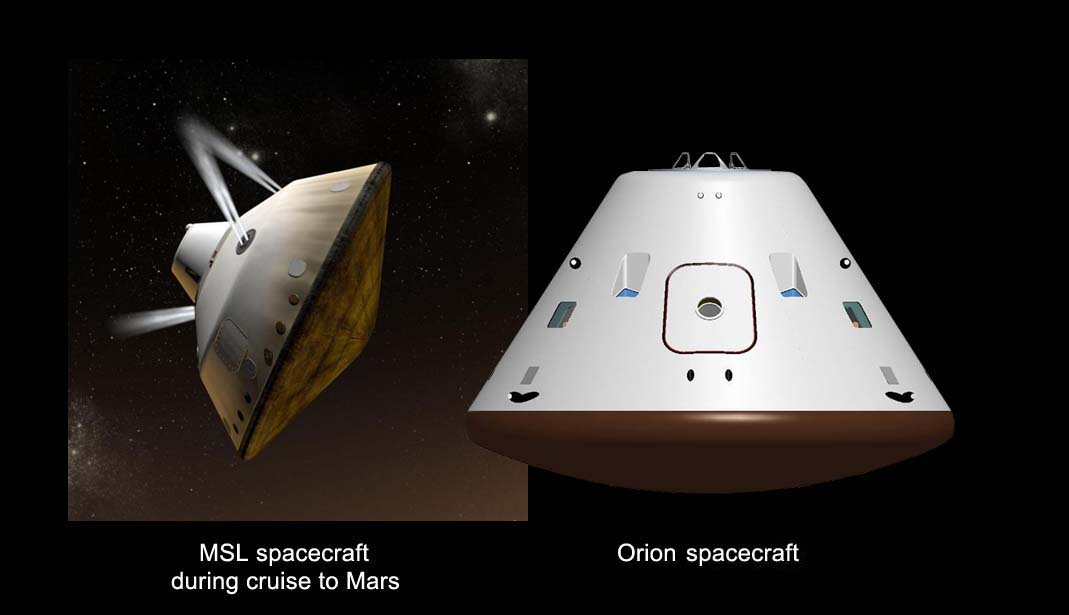


The Dream Chaser Cargo System is an American reusable lifting body spaceplane being developed by Sierra Nevada Corporation (SNC) Space Systems. The Dream Chaser is designed to resupply the International Space Station with both pressurized and unpressurized cargo. The vehicle will launch vertically on an Atlas V, Ariane 5 or Falcon Heavy rocket,[1] and autonomously land horizontally on conventional runways.[2] Potential further development of the spaceplane includes a crewedversion, the Dream Chaser Space System, which would be capable of carrying up to seven people to and from low Earth orbit.
The Boeing CST-100 Starliner (Crew Space Transportation) crew capsule is a spacecraft design under construction by Boeing in collaboration with Bigelow Aerospace as their entry for NASA's Commercial Crew Development (CCDev) program. Its primary purpose is to transport crew to the International Space Station (ISS)[6] and to private space stations such as the proposed Bigelow Aerospace Commercial Space Station.[7]
Starliner is similar in concept to the Orion spacecraft being built for NASA by Lockheed Martin.[8] The capsule has a diameter of 4.56 meters (15.0 ft),[3] which is slightly larger than the Apollo command module and smaller than the Orion capsule.[9] The Starliner is to support larger crews of up to seven people and is being designed to be able to remain on-orbit for up to seven months with reusability of up to ten missions.[10] As of 2010, it was intended to be compatible with four launch vehicles: Atlas V, Delta IV, Falcon 9, and Vulcan.[11][needs update] As of 2011, the initial launch vehicle was planned to be the Atlas V N22,[12] to be launched from SLC-41 at Cape Canaveral Air Force Station, Florida.
| A look at the logo for Orion, the expected name for NASA's capsule-based Crew Exploration Vehicle to follow the shuttle program. Credit. collectSPACE.com via NASA.
NASA chose the name for one of the most familiar and easily identifiable constellations.
"Many of its stars have been used for navigation and guided explorers to new worlds for centuries," said Orion Project Manager Skip Hatfield. "Our team, and all of NASA - and, I believe, our country - grows more excited with every step forward this program takes. The future for space exploration is coming quickly."
On February 1, 2012 SpaceX announced that it had completed the development of a new, more powerful version of a storable-propellant rocket engine, this one called SuperDraco. This high-thrust hypergolic engine—about 200 times larger than the Draco RCS thruster hypergolic engine—offers deep throttling ability,[6] and just like the Draco thruster, was designed to provide multiple restart capability and use the same shared hypergolic propellants as Draco. Its primary purpose was to be for SpaceX's LAS (launch abort system) on the Dragon spacecraft. According to a NASA press release, the engine has a transient from ignition to full thrust of 100 ms. During launch abort, eight SuperDracos were expected to fire for 5 seconds at full thrust. The development of the engine was partially funded by NASA's CCDev 2 program. Name: Draco comes from the Greek drakōn for dragon. Draco (constellation) is a constellation (the Dragon) in the polar region of the Northern Hemisphere near Cepheus and Ursa Major.
|

No comments:
Post a Comment